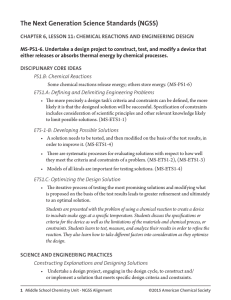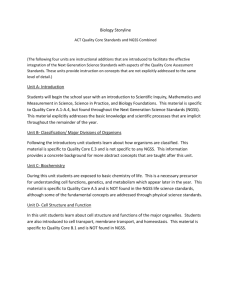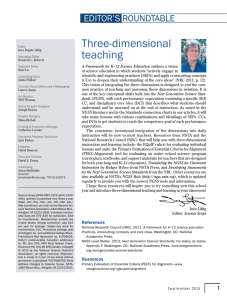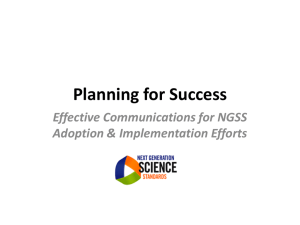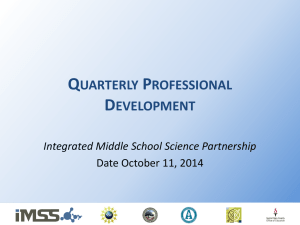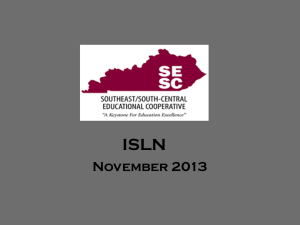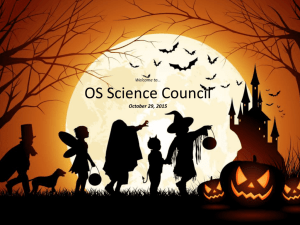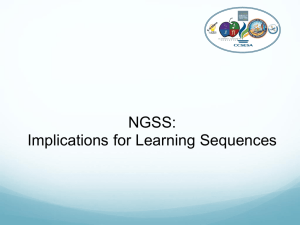NGSS SEPs Practices
advertisement
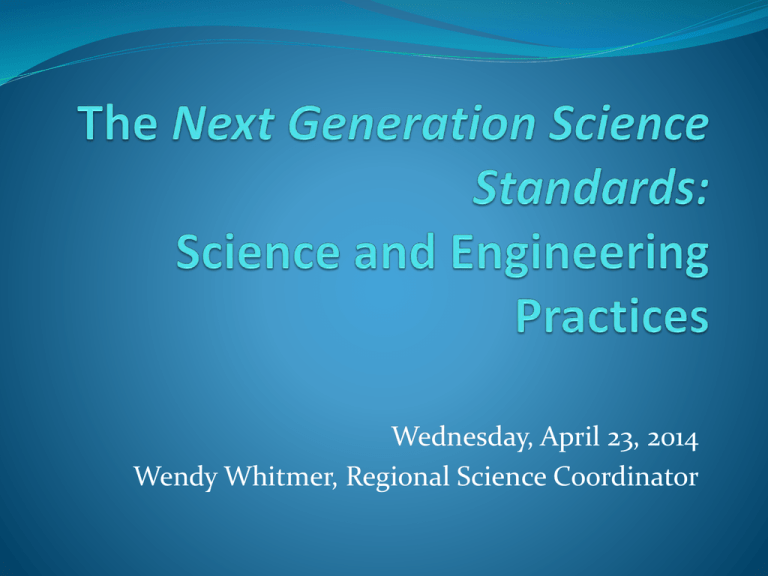
Wednesday, April 23, 2014 Wendy Whitmer, Regional Science Coordinator Introduction Who are we? Logistics Clock hours and evaluations Objectives Learn about the Next Generation Science Standards implementation plan and architecture. Identify the Science and Engineering Practices as outlined in the K-12 Framework for Science Education. Learn how the Science and Engineering Practices play a role in the NGSS through model lessons. Identify Science and Engineering Practices in your own curriculum. Agenda Asking Questions and Defining Problems Jigsaw the practices (Obtaining and Communicating Information) Gears (Planning and Carrying out Investigations) A look at examples from the world of science (Analyzing and Interpreting Data) What’s in it for me? (Constructing Explanations and Designing Solutions) Energy (Arguing from Evidence and Modeling) Science Probe Please fill out the probe individually Discuss your reasoning Add to or change your answer if you would like. Anatomy of a Next Generation Science Standard Building an Understanding of the Architecture of the NGSS: Foundation Boxes Building an Understanding of the Architecture of the NGSS: Performance Expectations Building an Understanding of the Architecture of the NGSS: Performance Expectations Architecture of the System Code for Topic Name Connections Foundatio n Boxes Assessable Compone nt Grade Level Coded Performance Expectations Code in parentheses designate which of the performance expectations use this Practice Code in parentheses designate which of the performance expectations incorporate this Disciplinary Core Idea Code in parentheses designate which of the performance expectations incorporate this Crosscutting Concept Asking Questions and Defining Problems Check out www.rightquestion.org!! On sticky notes, write down any question about the Next Generation Science Standards. Sorting Sort your questions into: 1. Open versus Closed Questions 2. Policy (big picture) vs. Architecture 3. Classroom Implications 4. Other Ask Away!! Closed questions 2. Policy questions 3. Architecture of the standards 4. Other 1. Finding the NGSS www.nextgenscience.org Mastery Connects App NGSS.nsta.org Jigsaw Appendix F (Dimension 1) ALL: Read the intro, rational, and guiding principles. Read about your practice. Key details to share about that practice with the group How that practice is developed K-12 Use a Frayer model. Gears (Planning and Carrying Out Investigations) 4-PS3-4 MS-PS3-5 HS-PS3-3 Complete the tasks on the sheet Venn Diagram Highlight the practices you used throughout the gears activity Card Sort… On your own…think about how you might sort the cards In a group…can you come to consensus about how the cards might be sorted? Can you sort them into just 2 groups? What if the titles of the groups were: Science & Engineering Thinking about Engineering as an iterative process with science… Models 5-PS1-1 Develop a model to describe that matter is made of particles too small to be seen. Probe- Is it a Model? Work with a partner Which ones were challenging and why? Watch Video https://www.youtube.com/watch?v=Zz95_VvTxZM Learning Target: I can develop a model that predicts and describes changes in particle motion, temperature, and state of a pure substance when thermal energy is added or removed. (MS-PS1-4) Tanker Car What do you need to know? Develop first conceptual model Develop a model Draw the system before the implosion, and after the implosion. Craft an explanation for the event. Water bottle Follow the instructions given… Add to conceptual model Gallery Walk Making your thinking public What-ifs? What if the valves were not shut and sealed? What if you could investigate with a smaller model? Another example: https://www.youtube.com/watch?v=JsoE4F2Pb20 Refine your explanation? What questions do you have for further investigation? How could we get the “answer”? Design Challenge? What design considerations need to be made when engineering something like a hot water heater? Science and Engineering Practices Highlight the practices you used throughout the tanker car activity. What about cross-cutting concepts? Where do we start? Choose two Practices that you can do REALLY well this year. Maybe they align well to the MSP/EOC? Pick two practices that you will work on for next year. Let’s Practice Practice Example from My Classroom Evidence (Student Product) Find a page in the NGSS that matches your curriculum. What are the practices on that page? Where can you find these in your curriculum? What is your evidence that students are using this practice? Science Probe Consider our practices of investigation today… Return to your probe How has your thinking changed or developed? Exit Ticket Evaluation: www.tinyurl.com/esdevaluation Thank you!!! Resources: www.nextgenscience.org www.esd101.net/science www.washingtonesds.org www.rightquestion.org Ngss.nsta.org App: Mastery Connects For Common Core and Next Generation


